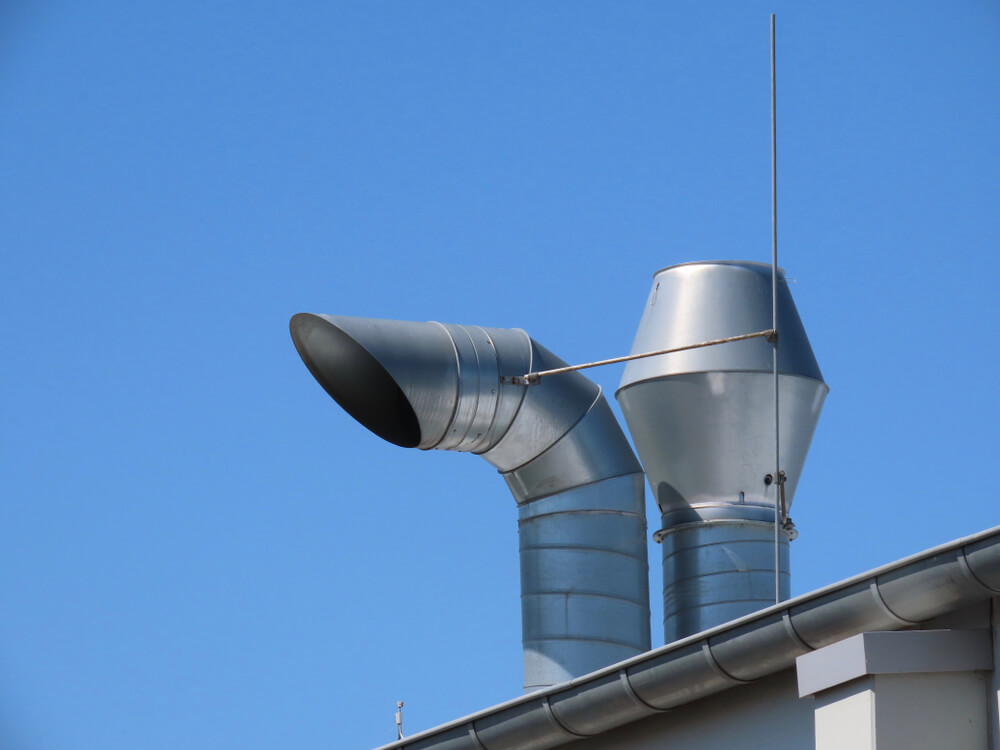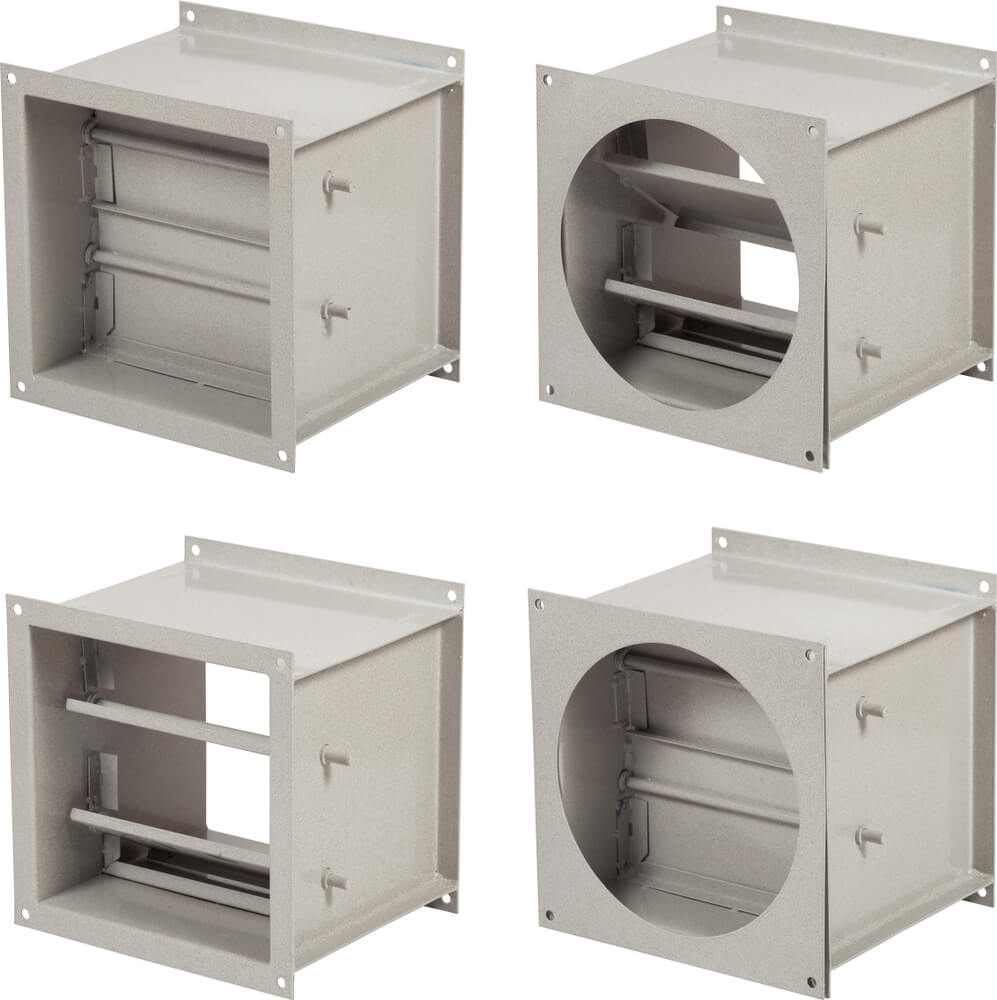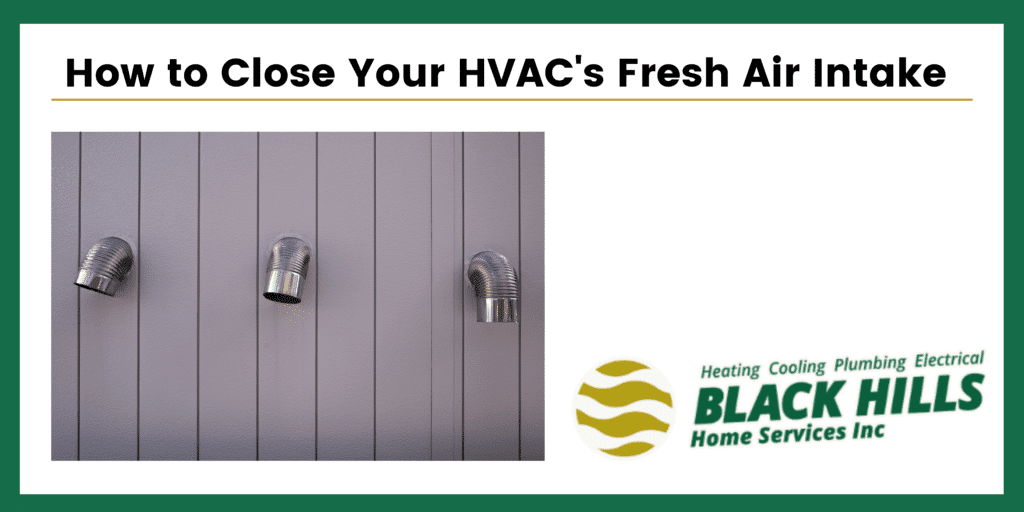As an important part of your HVAC system, fresh air intakes help to increase performance, efficiency, and operating life. They allow fresh air in from outside, which can improve indoor air quality. However, there are times when you might want to close air intakes, such as when air pollution is high or there is a wildfire advisory.
How Does a Fresh Air Intake Work?
How an air intake works depends on the type you have. It often takes the form of an open duct connected to an outside vent. An air intake is a small, filtered vent that delivers air instead of having the AC circulate air continuously through HVAC filters.
Your home likely vents air from your bathrooms, stove range, and HVAC system, and that air needs to be replaced to avoid creating a vacuum. One example of a vacuum is when you have doors that slam shut due to the difference in air pressure.
In the past, air leaks from doors and windows were relied upon to supply fresh air to replace vented air. However, this led to uneven heating or cooling, the new air was not filtered, and undesirable, stale air from basements and attics could be sucked into the living spaces. Now, it’s best practice to seal all leaks in doors and windows and install filtered fresh air intakes.
Your home may have multiple fresh air intakes to meet the latest building codes. This helps tighten the building envelope to prevent air loss and contamination from basements, crawl spaces, and attics. When properly installed, the intakes also block contaminants from unconditioned spaces from reaching the air in living areas.
How to Find Your Intake Vents
The best way to find fresh air intake vents is by looking near furnaces and other gas appliances. They usually appear as grilled vents, but they’re not always out in the open. If you don’t immediately see it, the intake may be behind an appliance, a closed door, or an intake cover panel. You can also follow the air intake vent to its source, whether it’s the attic or a location on the exterior of your home.

Don’t confuse a fresh air intake with a furnace exhaust port. Exhaust vents should never be blocked or closed. If you have two side-by-side vents, with one facing up and the other facing down, then the furnace exhaust vent should be the pipe facing up, while the furnace intake pipe faces down. Sometimes, one or both go to the roof instead of out of the side of the house.
Closing the Supply of Air from Outside
Typically, a fresh air intake unit is operated by a damper. A damper is a device that allows or blocks the flow of air through a duct or vent. It is typically constructed of a frame and a blade that moves in and out of the frame with a spring-loaded mechanism to shut off or allow airflow. Some dampers can be set in increments to reduce the airflow.
To close a fresh air intake and cut off outdoor air, you first need to locate the intake, which is usually placed in the attic but may also be ducted to the central air handler’s return side.
Close an intake vent by sliding the dampers into the closed position. If the intake is operated with a fan, you can turn off the intake vent by switching off the fan using the nearby switch. The owner’s manual from the system manufacturer should tell you how your intake vents work. Follow the instructions on how to close the vents.

Avoid covering an intake with a drape or curtain, or stuffing it with insulation or rags. By blocking it, you could strain the system or, in the case of an intake serving a furnace, cause negative pressure that causes fumes and carbon monoxide to back up.
Is Closing Fresh Air Intakes Enough?
During extreme conditions such as wildfires, closing air intakes is a wise idea. But, the precautions don’t end there.
Close all windows and doors, and turn off window units and bathroom fans. With these measures taken, it is safe to leave your air conditioning on. Keeping your HVAC system on will circulate filtered air and keep you protected indoors. We recommend a whole-home air filtration system if you want to ensure high-quality indoor air.
After the fire or air pollution is reduced to reasonable levels, you should be ready to change the HVAC air filters, as fine particles can find their way in, clog the filter, and get into the indoor air supply. Don’t forget fresh air intake maintenance; they will need their screens or filters cleaned and changed as well. The fresh air intake will need to be re-opened, and the furnace intake vents unblocked.
As a leading HVAC contractor in Olympia, Washington, Black Hills can install, repair, or maintain your air conditioner, furnace, and other heating and cooling equipment. We also offer air quality services such as air duct cleaning and products, including micro air purifiers, UV purification systems, and ionizers.
If you want to learn more about these or have questions about how to use your fresh air intakes, you can reach us 24/7 by requesting service online or calling 888-538-5821. Our friendly, knowledgeable technicians will provide the assistance you need.
